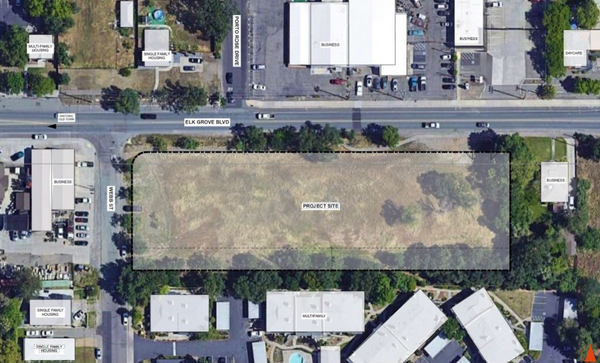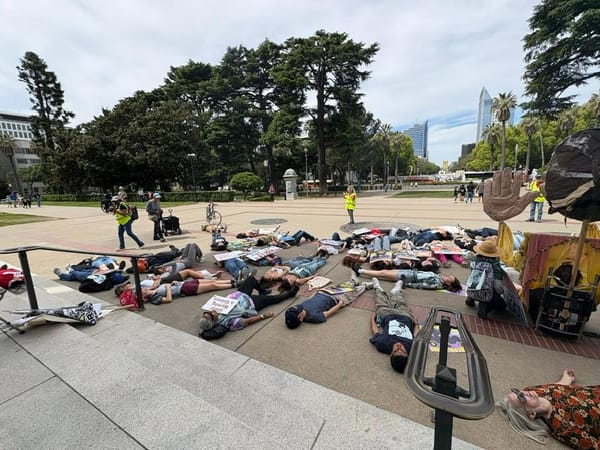Oil Producers Funding Referendum Against SB 1137 Received Permits For Drilling Near Communities
Los Angeles, CA—Just 3 days after California Governor Gavin Newsom signed a bill on Friday, September 16, in Vallejo mandating health and safety setbacks of 3200 feet between oil wells and vulnerable communities in California, the powerful oil industry launched an initiative campaign to reverse the new law.
Signature gatherers funded by the oil drillers are now asking the public to sign petitions to put the referendum overturning the setbacks law, SB 1137, on the ballot. But an analysis of the state’s data by the Fractracker Alliance and Consumer Watchdog reveals that 8 companies funding the campaign have already received 89 permits, including 86 rework permits and 3 new permits, for drilling closer to communities than the ban allows ahead of the January 1, 2022 date.
These 8 oil companies, who currently operate thousands of wells within the banned distance of 3200 feet from homes, schools, hospitals and other facilities, have contributed $7.5 million of the total $9.2 million raised to overturn the law by gathering signatures to qualify a referendum, according to the groups.
”As of January 1, SB 1137 bans the approval of permits for drilling new wells or fixing old ones within a 3,200-foot setback but does not shut down any existing wells,” the groups pointed out.
Out of the 16 drillers financing the referendum to date, these 8 companies received 86 rework permits and 3 new drilling permits within the 3,200′ setback zone, according to the FracTracker Alliance analysis. (See Table 1 below.)
More than one-fifth of all oil permits approved statewide in the third quarter were for well work within the setback and drillers have two years to use them, the group said.
Who are the oil companies that pumped the $7.5 million into the effort so far?
E&B Natural Resources Management Corporation tops the list of donors with $2,450,000 spent to date. The corporation, with a total of 1,230 operational oil and gas wells, received permits for reworking 4 oil wells within the setback areas.
Signal Hill Petroleum Inc. has contributed $1,200.000 to the campaign. The company, with 481 total operational oil and gas wells, received 10 rework permits.
Vaquero Energy, Inc., with a total of 472 operational oil and gas wells, gave $1,000,000 to the campaign. They received 2 new drilling permits and 5 rework permits in the banned zone.
MacPherson Oil Company LLC, with a total of 227 wells, contributed $995,000 to the effort. They received 5 rework permits in the zone.
Sentinel Peak Resources California LL, with 1,475 oil and gas wells, also contributed $995,000 to the campaign. They obtained 1 new permit and 29 rework permits within the setback zones.
The Holmes Western Oil Corporation, with 27 total wells, contributed $450,000. They received 2 rework permits within the zone.
San Joaquin Facilities Management, with 196 total wells, spent $250,000. They received 29 rework permits within the buffer zone.
Finally, the Termo Company, with 152 total wells, spent $149,049. They received 2 rework permits in the zone.
CalGEM has issued 12,626 oil and gas drilling permits since January 2019
The same update by the two groups also reveals that a total of 12,626 total new and reworked permits have been approved by the Newsom administration since January 2019.All permit updates are posted on a map at www.newsomwellwatch.com
A total of 2,283 total permits have been approved by the state’s oil and gas regulatory agency, CalGEM, in the first nine months of 2022.
“Overall, permits dispensed statewide by the California Geologic Energy Management Division (CalGEM) in the first nine months of 2022 jumped by one third over the same period last year,” the analysis continued. “More than two thirds were to fix or deepen wells rather than drill new ones, continuing a statewide trend.”
“CalGEM and the administration understand perfectly that permitting new wells and reworking wells near homes, schools, hospitals and other receptors puts communities at undue risk of exposure to toxic and carcinogenic pollutants,” said Kyle Ferrar, Western Coordinator at FracTracker Alliance. “In light of this, regulators should stop all new permitting immediately.”
“After a decade of vulnerable communities fighting for this setback and finally getting it, oil drillers know the jig is up and they won’t get new permits for wells near residences after January 1, and so are now trying to upend the law,” said Consumer Advocate Liza Tucker. “State oil regulators should hold off on any fourth quarter permit approvals within the setback zone, just as they have been holding off on approvals of fracking permits ahead of a 2024 ban on that practice.”
See: https://www.fractracker.org/2022/04/implications-of-a-3200-foot-setback-in-california/
1,954 rework permits and 329 new drilling permits issued in 2022 to date
Including but not limited to those companies funding the referendum, there were a total of 1,954 rework permits and 329 new drilling permits, a total of 2,283, issued in the first nine months of 2022, according to Tucker. Of those, 416 of the rework permits (21.3%) and 28 (8.8%) of the new drilling permits were within the 3,200′ setback zone and were awarded to all companies, not just those funding the referendum.
Currently, more than one quarter of existing wells throughout the state are located within the setback. More than two million Californians live within half a mile of a well and another five million live within a mile.
“The setback is set at six-tenths of a mile from communities, but even living within 2.5 miles of a well exposes Californians to levels of air pollution linked to asthma, cancer, cardiovascular diseases, preterm birth and other long term health effects,” according to Tucker. See: https://www.ehn.org/oil-and-natural-gas-industry-air-pollution-2655333610.html
According to Fractracker’s analysis, statewide approvals for all permit types rose 21% this quarter over the same quarter last year. (See Table 2 below.) But permits granted for work on existing wells jumped 59% while permit approvals to drill new wells plunged 55%, according to FracTracker’s analysis. In the first nine months this year, 68% of all approved permits were to fix or deepen existing wells
“On a positive note, in the third quarter, no new fracking permits were approved, and permits to plug wells rose 30%, according to CalGEM data analyzed by FracTracker Alliance,” Tucker added. See 3rd Quarter Permit Table — FracTracker Alliance Analysis of CalGEM Data:

Gusher of oil industry money has fouled California politics
The $9.2 million spent by oil drillers to overturn SB 1137 is just part of the gusher of money spent by the oil and gas industry on campaigns and lobbying in 2022 to date.
The biggest sources of outside spending in legislative races in the November 2022 election cycle were oil and gas companies and electric utilities, according to Ben Christopher and Sameea Kamal of Cal Matters.
“Those organizations have spent more than $7.6 million, roughly one-fifth of the total. Most of that spending happened before Newsom announced a December special legislative session on his oil tax plan.”
In a huge story broken by this reporter, the oil and gas industry has spent an astounding $30 million in the 2021-22 Legislative Session against SB 1137 and other bills it was opposed to.
Big Oil and the Western States Petroleum Association (WSPA) spent $4,573,758 in lobbying expenses from September 1 to October 31, 2022. That brings the total of oil and gas corporation lobbying expenses to $30,029,638 in the last seven quarters of the 2021-22 Legislative Session: cal-access.sos.ca.gov/…
The Western States Petroleum Association spent $2,164,966.81of that $4,573,758 in lobbying expenses in the seventh quarter of the legislative session. That brings the total of the lobbying expenses by WSPA alone to $23 million in the 2021-22 session!
While environmental justice groups, with the help of Governor Gavin Newsom, were able to finally get SB 1137 approved, other important bills, including a bill to ban offshore drilling off the California coast and another bill to divest State of California pension funds from investments in the fossil fuel industry, were stopped by oil industry-backed legislators.
“The oil and gas industry knows no bounds when it comes to putting profits over people and subverting the democratic process,” said Brandon Dawson, Sierra Club California Director. “California frontline communities have been fighting for protections from toxic oil and gas pollution for decades, and the setbacks mandated by SB 1137 will go a long way towards preserving those communities’ air quality and ecosystems.”
Big Oil has been able to get away with what it does in California for decades because of the enormous influence the Western States Petroleum Association, the trade group for the oil industry, and oil and gas companies, has exerted over the California Legislature, regulatory agencies and media.
WSPA, the largest and most powerful corporate lobbying group in Sacramento, alone has spent over $23 million lobbying the California Legislature and other state officials in the 2021-22 session, including $2,164,966.81 from June 1 through September 30, 2022.
Over the past four years, fossil fuel companies paid almost $77.5 million to lobby lawmakers in Sacramento, reported Josh Slowiczek in Capital and Main on May 14.
“Oil and gas interests spent four times as much as environmental advocacy groups and almost six times as much as clean energy firms on lobbying efforts in California between 2018 and 2021, according to a Capital & Main analysis — reflecting the intensity of the industry’s efforts to influence policy in a state whose leaders have vowed to build an energy future free of fossil fuels,” Slowiczek wrote.
WSPA and Big Oil wield their power in 8 major ways: through (1) lobbying; (2) campaign spending; (3) serving on and putting shills on regulatory panels; (4) creating Astroturf groups; (5) working in collaboration with media; (6) creating alliances with labor unions; (7) contributing to non profit organizations; and (8) sponsoring awards ceremonies, including those for legislators and journalists.



